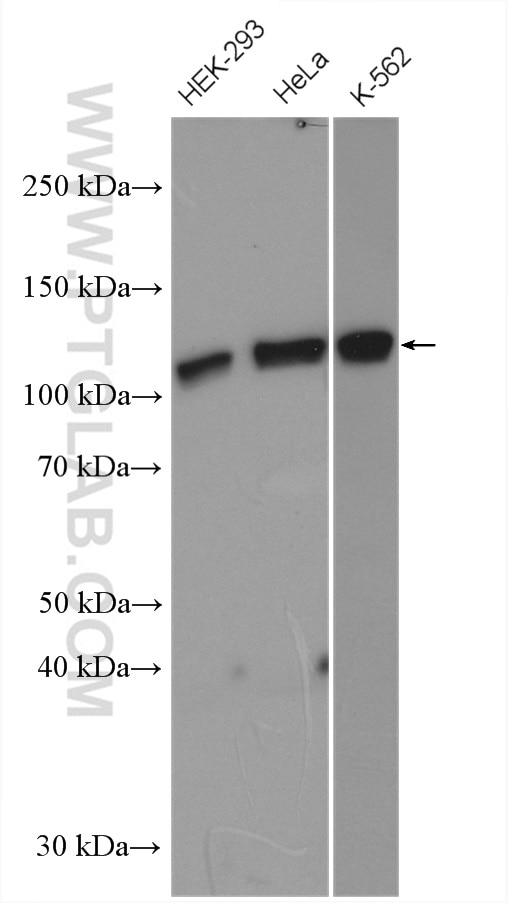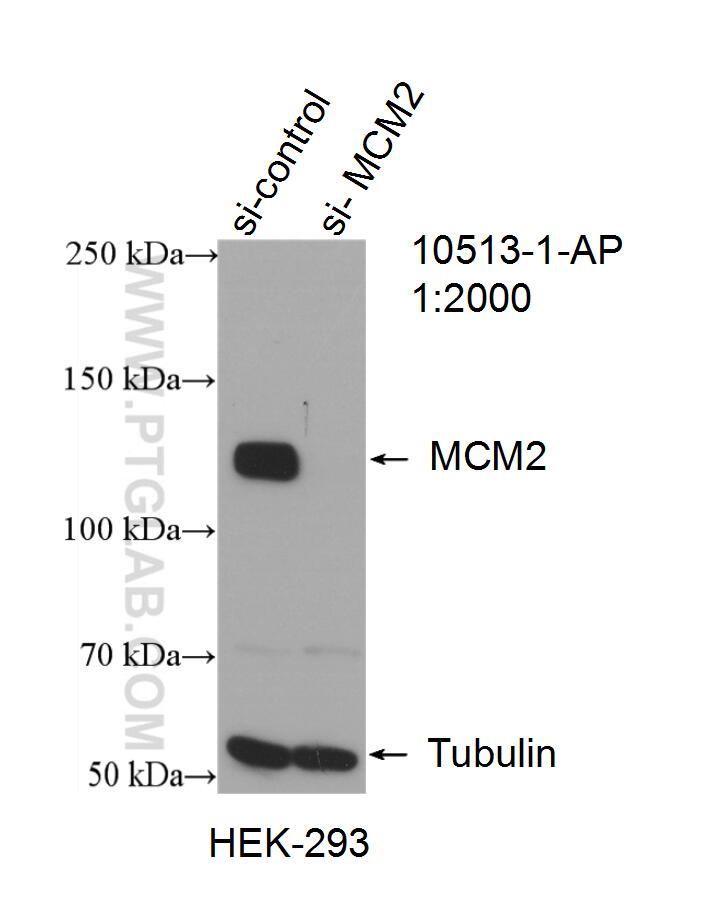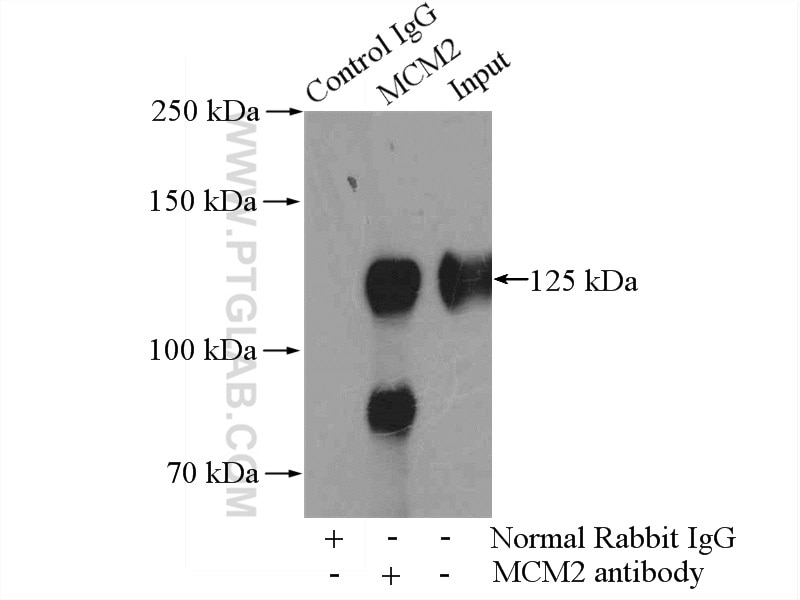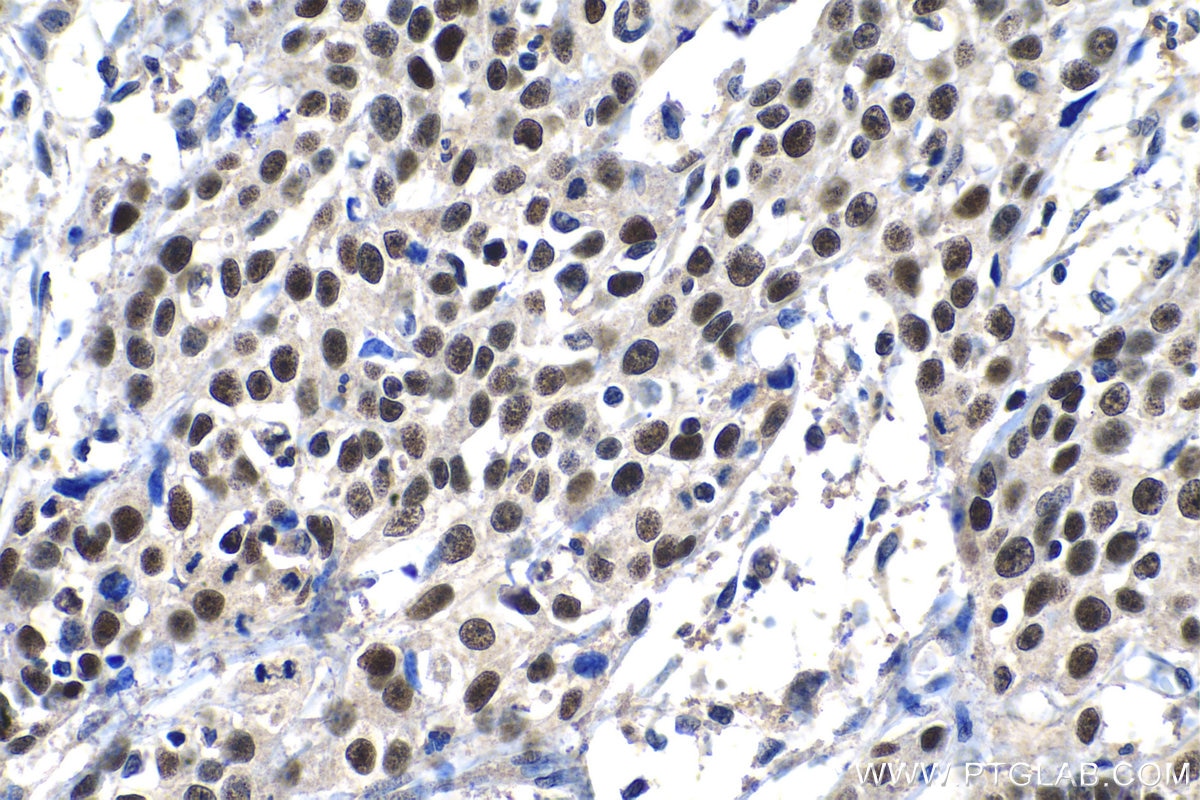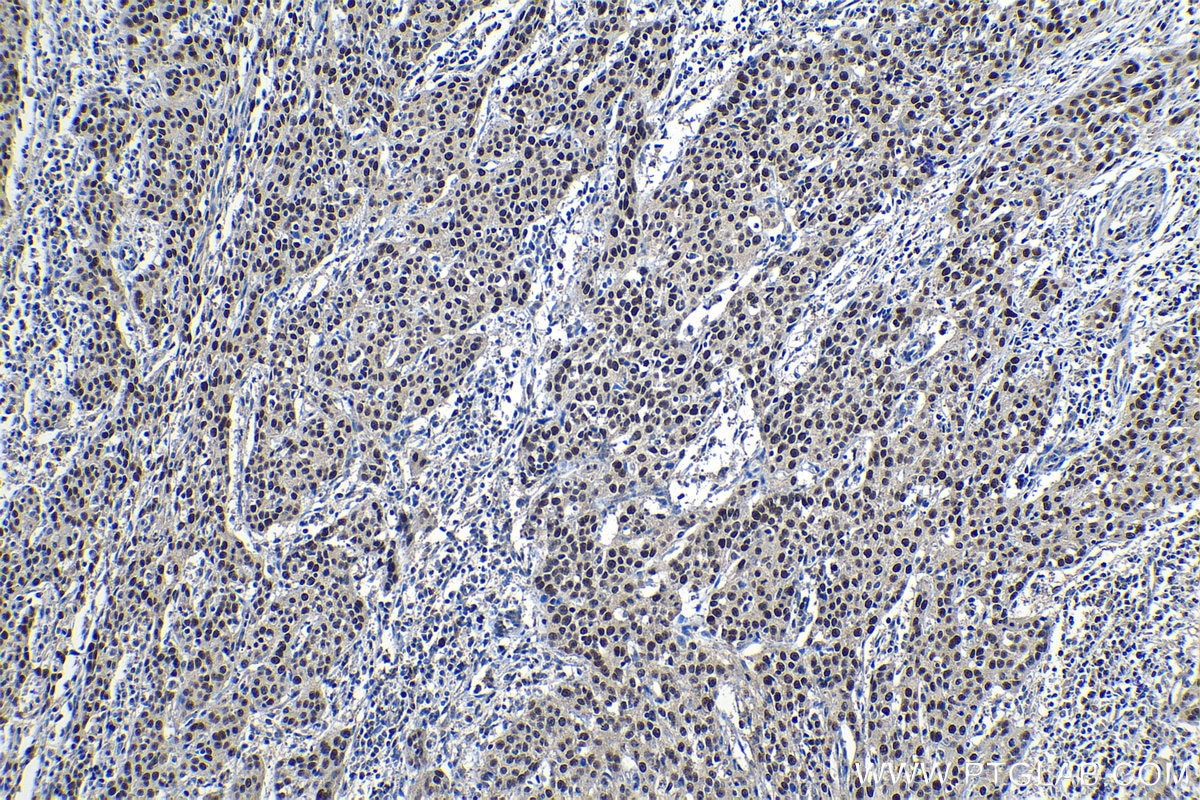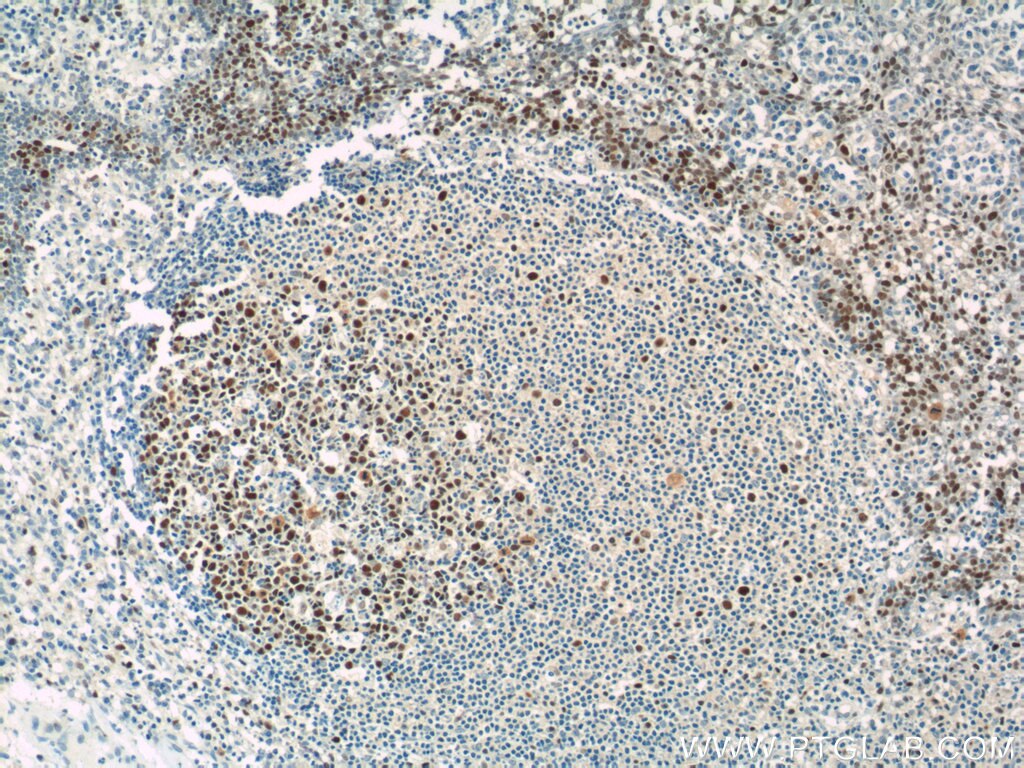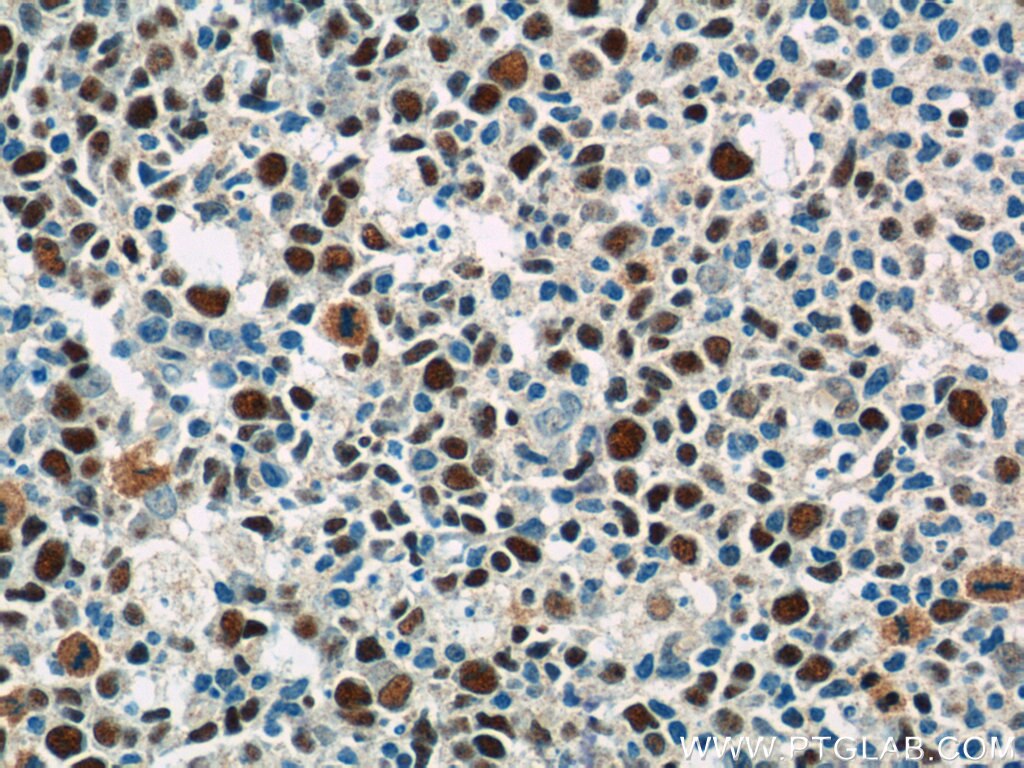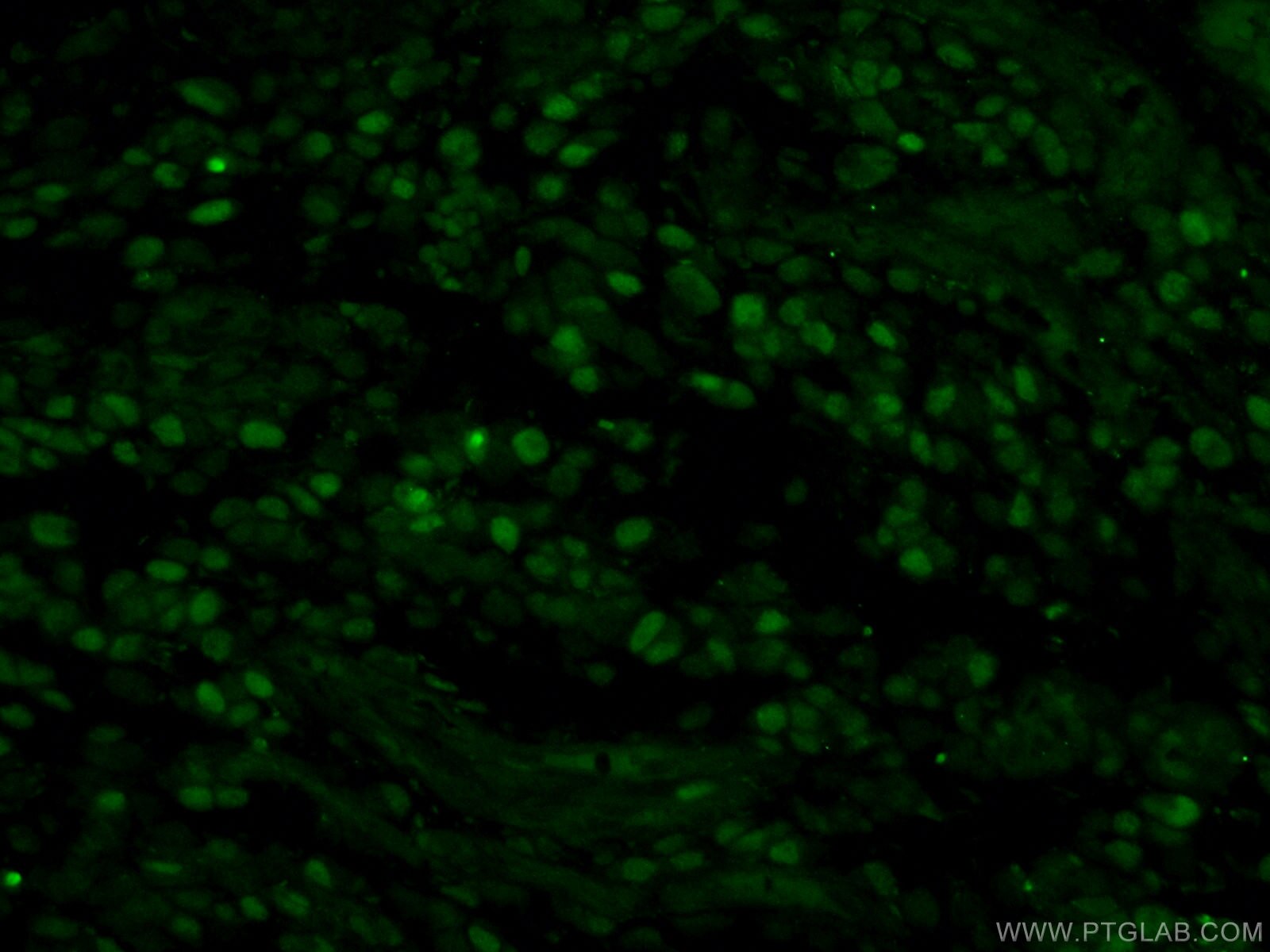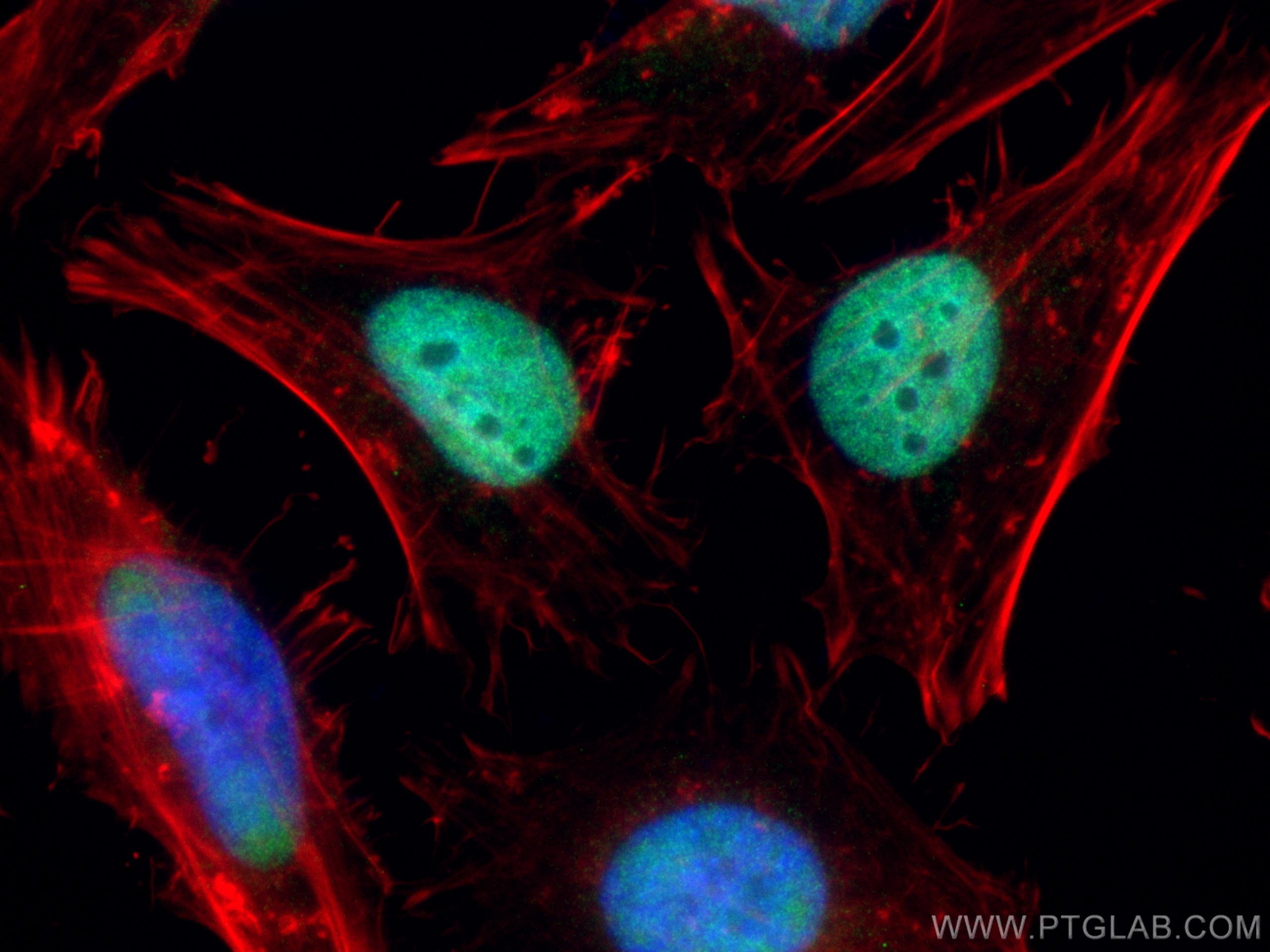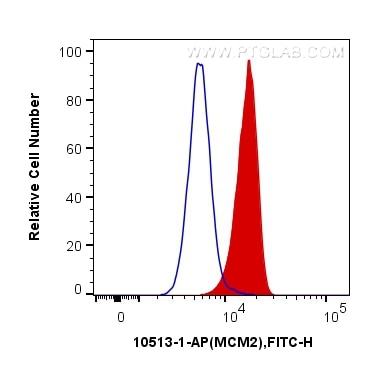- Phare
- Validé par KD/KO
Anticorps Polyclonal de lapin anti-MCM2
MCM2 Polyclonal Antibody for WB, IP, IHC, IF-P, ELISA, IF/ICC, FC (Intra)
Hôte / Isotype
Lapin / IgG
Réactivité testée
Humain, souris et plus (1)
Applications
WB, IP, RIP, IHC, IF-P, ELISA, IF/ICC, FC (Intra)
Conjugaison
Non conjugué
N° de cat : 10513-1-AP
Synonymes
Galerie de données de validation
Applications testées
| Résultats positifs en WB | cellules HEK-293, cellules HeLa, cellules K-562 |
| Résultats positifs en IP | cellules HEK-293 |
| Résultats positifs en IHC | tissu de cancer du col de l'utérus humain, tissu d'amygdalite humain il est suggéré de démasquer l'antigène avec un tampon de TE buffer pH 9.0; (*) À défaut, 'le démasquage de l'antigène peut être 'effectué avec un tampon citrate pH 6,0. |
| Résultats positifs en IF-P | tissu de gliome humain, |
| Résultats positifs en IF/ICC | cellules HeLa |
| Résultats positifs en FC (Intra) | cellules NIH/3T3, |
Dilution recommandée
| Application | Dilution |
|---|---|
| Western Blot (WB) | WB : 1:500-1:3000 |
| Immunoprécipitation (IP) | IP : 0.5-4.0 ug for 1.0-3.0 mg of total protein lysate |
| Immunohistochimie (IHC) | IHC : 1:500-1:2000 |
| Immunofluorescence (IF)-P | IF-P : 1:50-1:500 |
| Immunofluorescence (IF)/ICC | IF/ICC : 1:10-1:100 |
| Flow Cytometry (FC) (INTRA) | FC (INTRA) : 0.20 ug per 10^6 cells in a 100 µl suspension |
| It is recommended that this reagent should be titrated in each testing system to obtain optimal results. | |
| Sample-dependent, check data in validation data gallery | |
Applications publiées
| KD/KO | See 3 publications below |
| WB | See 30 publications below |
| IHC | See 10 publications below |
| IF | See 3 publications below |
| IP | See 1 publications below |
| RIP | See 1 publications below |
Informations sur le produit
10513-1-AP cible MCM2 dans les applications de WB, IP, RIP, IHC, IF-P, ELISA, IF/ICC, FC (Intra) et montre une réactivité avec des échantillons Humain, souris
| Réactivité | Humain, souris |
| Réactivité citée | rat, Humain, souris |
| Hôte / Isotype | Lapin / IgG |
| Clonalité | Polyclonal |
| Type | Anticorps |
| Immunogène | MCM2 Protéine recombinante Ag0798 |
| Nom complet | minichromosome maintenance complex component 2 |
| Masse moléculaire calculée | 102 kDa |
| Poids moléculaire observé | 116-125 kDa |
| Numéro d’acquisition GenBank | BC007670 |
| Symbole du gène | MCM2 |
| Identification du gène (NCBI) | 4171 |
| Conjugaison | Non conjugué |
| Forme | Liquide |
| Méthode de purification | Purification par affinité contre l'antigène |
| Tampon de stockage | PBS avec azoture de sodium à 0,02 % et glycérol à 50 % pH 7,3 |
| Conditions de stockage | Stocker à -20°C. Stable pendant un an après l'expédition. L'aliquotage n'est pas nécessaire pour le stockage à -20oC Les 20ul contiennent 0,1% de BSA. |
Informations générales
The MCM2-7 complex forms the core of the replicative helicase which acts as the molecular motor that uses ATP binding and hydrolysis to fuel the unwinding of double-stranded DNA at the replication fork in eukaryotes. This complex is the putative replicative helicase essential for 'once per cell cycle' DNA replication initiation and elongation in eukaryotic cells. MCM2, also named CDCL1 and BM28, is a human nuclear protein that plays an important role in 2 crucial steps of the cell cycle, namely, onset of DNA replication and cell division.
Protocole
| Product Specific Protocols | |
|---|---|
| WB protocol for MCM2 antibody 10513-1-AP | Download protocol |
| IHC protocol for MCM2 antibody 10513-1-AP | Download protocol |
| IF protocol for MCM2 antibody 10513-1-AP | Download protocol |
| IP protocol for MCM2 antibody 10513-1-AP | Download protocol |
| Standard Protocols | |
|---|---|
| Click here to view our Standard Protocols |
Publications
| Species | Application | Title |
|---|---|---|
Nat Commun DNA replication initiation factor RECQ4 possesses a role in antagonizing DNA replication initiation | ||
Nat Commun Solving the MCM paradox by visualizing the scaffold of CMG helicase at active replisomes | ||
Cancer Res LncRNA AGPG confers endocrine resistance in breast cancer by promoting E2F1 activity | ||
Int J Biol Sci ESRG is critical to maintain the cell survival and self-renewal/pluripotency of hPSCs by collaborating with MCM2 to suppress p53 pathway | ||
Biomaterials Biocompatible PEGylated Gold nanorods function As cytokinesis inhibitors to suppress angiogenesis. |
Avis
The reviews below have been submitted by verified Proteintech customers who received an incentive forproviding their feedback.
FH Mandi (Verified Customer) (03-02-2020) | Biotinylated secondary and Alex Fluor needed for decent signal vs non-specific staining
|
